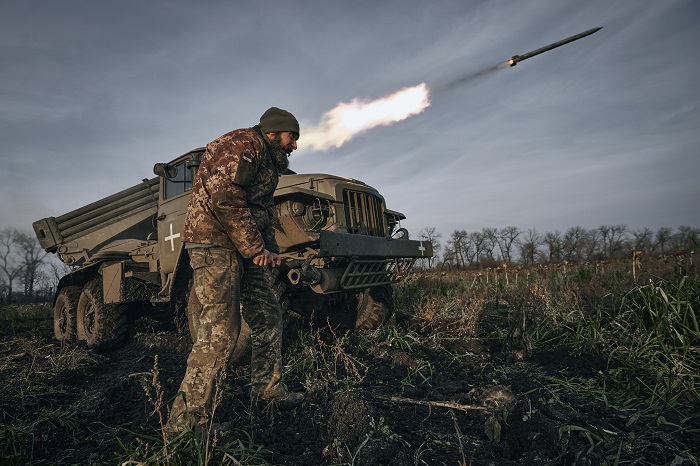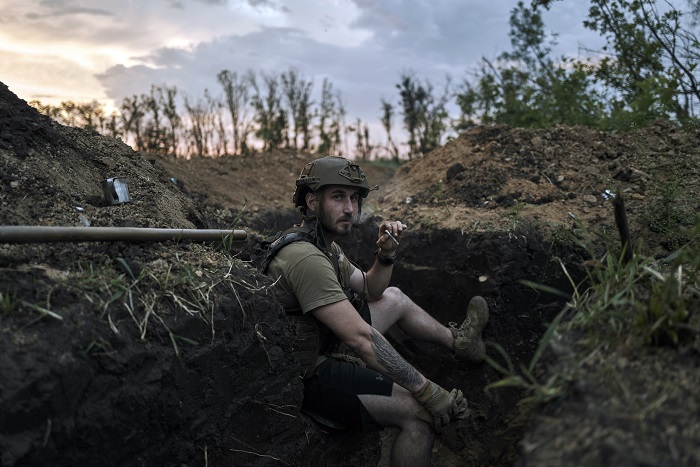world news news online
By Daphné Benoit
Ukraine’s army has made modest progress in the south and Russian forces have advanced in the Donbas, but the war’s frontline is frozen and a month after the launch of Kyiv’s much-heralded counteroffensive neither side seems able to force a decisive breakthrough. news online
Ukrainian forces over the past week recaptured nine square kilometres (four square miles) in the east and 28 square kilometres in the south, Deputy Defence Minister Ganna Malyar said Monday.
It’s a far cry from Kyiv’s lightning successes seizing 9,000 square kms in just nine days east of Kharkiv at the start of last September, followed by 5,000 more in November in the Kherson region.
“Last week was difficult on the frontline,” said Ukrainian President Volodymyr Zelensky.
“But we are making progress. We are moving forward, step by step!”
Moscow has spent months consolidating its defensive lines, some of which now run to a depth of 30 kms.
“There’s a considerable number of Russians in Ukraine. There are considerable defensive obstacles,” Admiral Rob Bauer, the chair of NATO’s Military Committee told journalists in Brussels on Monday.
“The counteroffensive, it is difficult. People should never think that this is an easy walkover.”
Ukrainian military chiefs were right to be “cautious” probing for weaknesses in the Russian lines, as they risk losing a lot of forces in full-on assaults, Bauer said.
world news news online
To further complicate the task for Kyiv, the Russians have recently attacked several places in the Donbas, which Moscow claimed to have annexed last year. Conquering the region remains Moscow’s declared main aim of the war.

According to Kyiv, Russian forces are also on the offensive, and in recent days launched new assaults towards Svatove, in the eastern Lugansk region, as well as near Avdiivka, Mariinka and Lyman in Donetsk.
French military historian Michel Goya said it would be unwise to draw hasty conclusions, with the frontlines entrenched and neither side powerful enough to crush the other.
Not enough artillery
“The Russians are in a defensive position in the Zaporizhzhia-Donetsk zone, which does not stop them from carrying out peripheral operations … to try to pin down the Ukrainian forces,” Goya told AFP.
“The Ukrainians are doing the same in the Donbas region and also crossing the Dnipro (river). It creates a bit of a diversion, forces the Russians to move some of their forces,” he said.
But, “in reality, these operations from both sides are minuscule, they change none of the strategic context.”
“The front has virtually not moved in seven months. It’s turned into a pure war of position,” with solid defence lines and a “lack of means of support” — particularly artillery to knock out the defences and let through tanks and infantry.

“The problem for example in the case of the Ukrainian offensive in the south is that there are far fewer support units than combat units,” he said.
“That’s why the Ukrainians are only using a fraction of their brigades — they can’t support more.
“To be able to advance you need a deluge of shells, which requires a big superiority in firepower. The Ukrainians don’t have it. And nor do the Russians, even if they had it for a while.”
The historian noted that Putin “certainly has more artillery pieces than the Ukrainians but has had to cut back because of a lack of sufficient munitions,” from 40,000-60,000 shells a day a year ago to 10,000-20,000 shells maximum today.
Kyiv also has to deal with the advances made by the enemy, which has learnt in the field.
“Ukraine is facing a somewhat different Russian army from that in 2022,” Ivan Klyszcz, a researcher for Estonia’s International Centre for Defence and Security (ICDS) told AFP.
After some major blunders at the start of the invasion, “Russian armed forces… have adjusted, though haphazardly, some of their tactics and procedures to better fight against Ukraine,” he said.
As shown by the very efficient daily use over several months of small explosive Lancet drones to pepper Ukraine’s western artillery pieces.
dab/dla/fz/bp/fb
© Agence France-Presse. All rights are reserved.
world news news online


